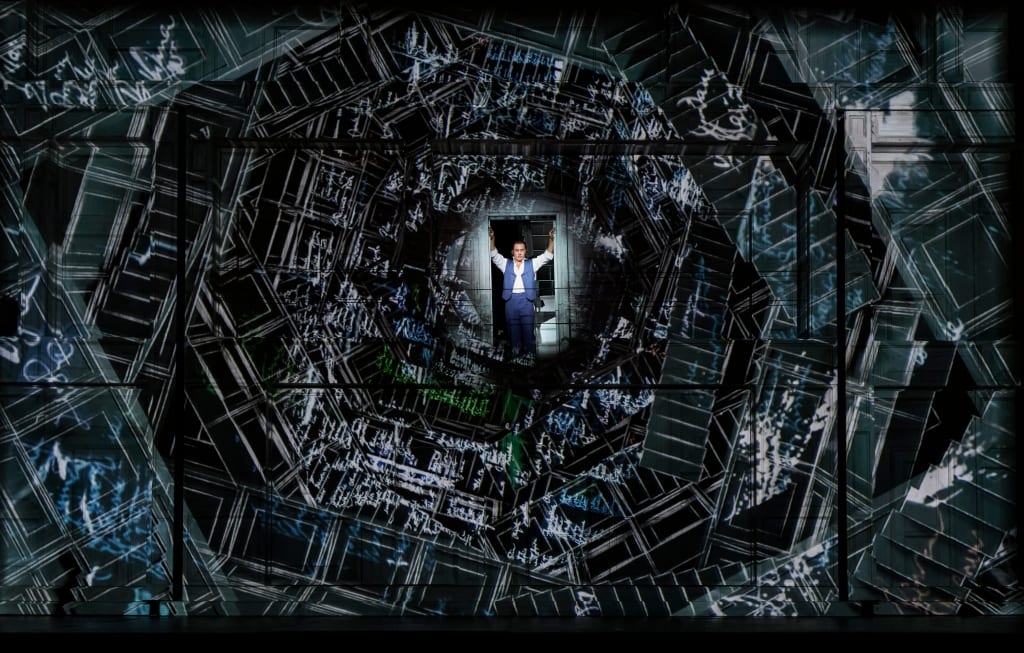Don Juan is a well-known legend whose legacy has remained owing predominantly to all its many variations and adaptations. This Spanish tale has been turned into a French play by Molière in 1665, a satirical poem by Lord Byron in 1819, and, above all, an Italian opera by Mozart. What is the key to their success? Translation. This tale has stood the test of time through translation, be in from one language to another, or from one genre to another. Stories survive according to the frequency with which they have been rewritten, retold, reformulated. And the Royal Opera House, in the twenty-first century, can certainly add to the history of these reconfigurations in this new, current, and invigorating revival.
Audiences are presented with what can only be described as a theatre-within-a-theatre. On stage we see another stage, in a form of a revolving wooden house. The set design by Es Devlin is visually stunning, but arguably a little tricky for the singers to navigate. The special effects, the different-coloured lighting, and the digital-like handwriting listing all the names of the women Don Giovanni has seduced, vividly brings this modern adaptation up-to-date (video designer Luke Halls). The costumes by Anka Vang Kragh enhance the contemporary edge to the opera: Kragh’s influences from Dior and Stella McCartney clearly emerge in the form of elegant ball-gown dresses with graffiti-like twists to the designs, blending in well the world of the characters with today’s fashion.

The stage-within-a-stage effect enhances the ‘cubist’ perspective of the production. Just as different sides to the wooden house are exposed as it revolves, different sides to each of the protagonists are unveiled as the plot progresses. This revival not only brings out the skill and talent of the singers, but tests them as actors as each is made to portray their respective character’s multitude of different personalities. Don Giovanni, played by the excellent Erwin Schrott, evolves from a ruthless a womanizer – a charming donnaiolo – to a vulnerable and helpless hero at the end of the opera, despite his majestic exterior. Donna Elvira, performed by Myrtò Papatanasiu, also reveals herself to have many sides to her character. She develops from being vengeful lover, whose revenge seems to set the plot in motion, to a compassionate forgiver, able and willing to see beyond the ‘sins’ of her beloved.
As well as pitching his acting right, vocally, Schrott excels in projecting his voice: flawlessly articulate, clear, and always on point. Roberto Tagliavini’s voice is well suited to his role as the jovial Leporello, and Malin Byström as Donna Anna beautifully reflects Mozart’s music. The Commendatore, interpreted by Brindley Sherratt, though not one of the major roles of the opera, looms over the unfolding of the events, literally in the form of a ghost, powerful enough to reduce Don Giovanni to his knees. The peasant couple also have a strong grip on the opera (Leon Košavić and Brindley Sherratt), through, occasionally, their performances are overshadowed by the rest of the cast.
All in all, this is a stimulating, visually-exciting, and provocative revival, whose set, protagonist, and orchestra will send shivers down your spine, just as Mozart had intended.

